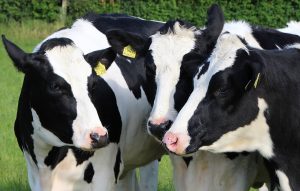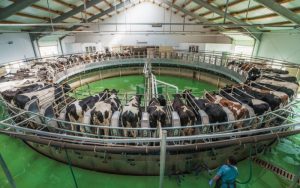
Experts reveal why a cow’s liver is the most critical factor for reproductive success, and how to optimize it.
During the critical period of early lactation, when a dairy cow’s nutritional intake is at its lowest but energy demands are at their peak, a powerful but often overlooked organ is working overtime: the liver. While producers often focus on more visible factors like bulls or breeding cycles, the article makes a compelling case that the liver’s function is the true cornerstone of reproductive health. As the central command for converting nutrients, clearing toxins, and producing vital glucose, its performance directly influences the success of a breeding program.
The fundamental link between the liver and fertility lies in its role as a glucose factory. The article highlights that reproduction is highly dependent on glucose, and when a cow’s liver is overwhelmed, its ability to produce this essential sugar can decline. This metabolic stress can manifest as ketosis, a condition where the liver releases excess ketones. Recognizing the signs of this breakdown through data journalism, like elevated levels of NEFA and BHB in blood tests, can provide a clear early warning signal for reduced conception rates.
Ketosis itself is not a single issue but a spectrum of conditions with distinct nutritional causes. The article breaks down three types: Type 1, caused by low-energy diets; Type 2, resulting from over-conditioned cows at calving; and Type 3, which is linked to poor-quality silage. This detailed approach to understanding the problem is crucial for producers to accurately diagnose and manage the issue at its source, as each type requires a different nutritional or management strategy to correct.
Fortunately, there are several actionable strategies to support liver health and improve reproductive outcomes. The article recommends targeted nutritional interventions, such as feeding for the liver with specific amino acids and propionic acid precursors. It also suggests using controlled negative DCAD diets and strategically utilizing minerals like selenium and zinc, which play a vital role in metabolic function. These proactive steps move beyond reactive treatment and into preventative care for the entire herd.
Ultimately, the article serves as a powerful reminder that the foundation of a successful agribusiness is robust animal health. By focusing on a cow’s internal wellness, particularly the liver, producers can directly improve their herd’s reproductive success, leading to better overall performance and profitability. Proactive monitoring of freshly calved cows for subclinical ketosis through blood tests is presented as an essential management practice that can secure the future of the farm’s dairy economics and breeding program.
Source: Farmers Weekly, “The liver is key to reproductive health”
You can now read the most important #news on #eDairyNews #Whatsapp channels!!!
🇺🇸 eDairy News INGLÊS: https://whatsapp.com/channel/0029VaKsjzGDTkJyIN6hcP1K



















